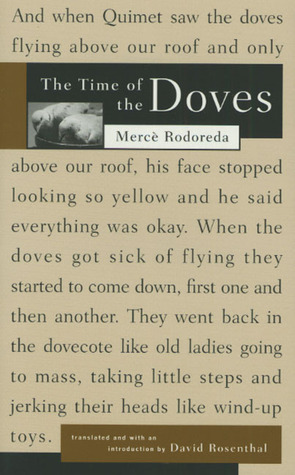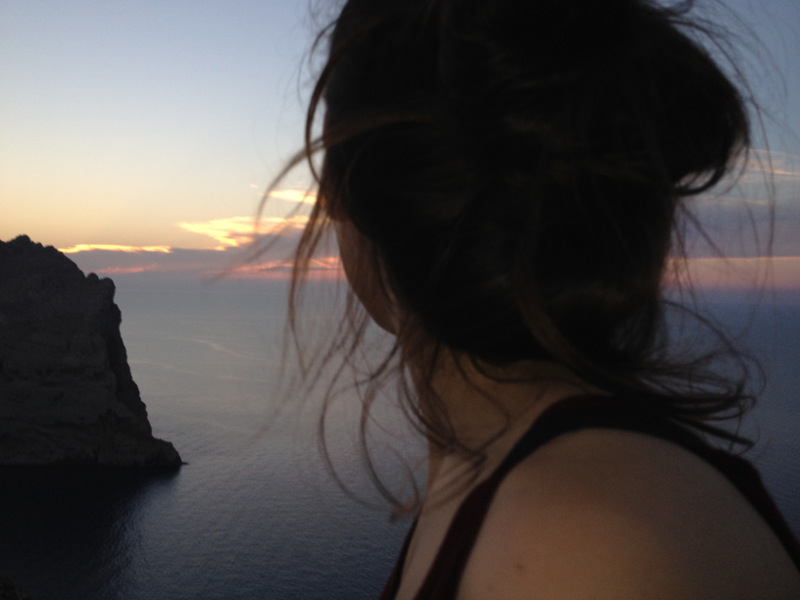
- The Time of the Doves
- Published by: Graywolf Press
- Level: Intermediate
- First Published in: 1962
La Plaça del Diamant is written in what is considered to be an example of stream of consciousness, as the main character, Colometa, talks to a silent listener. It is a great document about being a woman in Spain during the post-war years.

For many people in their twenties and thirties, La Plaça del Diamant is likely associated with exams and preparations for university. Indeed, this major masterpiece of Catalan literature is, for many Catalans, a test to pass before being a story to enjoy, since it is mandatory reading during the final year of secondary education in some areas of Spain. Even if some of its themes are universal, it is difficult to put oneself in the protagonist’s shoes when one is just a teenager, analyzing the use of language and contemporary history in this novel by Mercè Rodoreda released in 1962. Since then, it has been translated to more than 20 languages, and it is a great document about being a woman in Spain during the post-war years.
"When reading this book, one can imagine him or herself sitting next to this kind lady, sharing some coffee and pastries, under a blanket that also covers a brazier under the table."
In any case, the achievements of Rodoreda’s text are remarkable. La Plaça del Diamant is written in what is considered to be an example of stream of consciousness, as the main character, Colometa, talks to a silent listener. Her innocence and sweetness make her language plain and easy to read, although it is full of hidden poetry that slowly caresses readers until reaching their guts. Her language is full of descriptions, as she explains every single detail of even the tiniest event in her life, hoping to convey her memories as vividly and as close to the truth as possible. She uses polysyndetons (successive conjunctions where commas might go instead) and diminutives, giving her language a childlike feel and delivering it through breathless speech: “Tenia uns ullets de mico i duia una camisa blanca amb ratlleta blava” (He had monkey eyes and wore a white shirt with a small blue line) or “A terra hi havia pinyols de síndria i pels racons closques de síndria i ampolles buides de cervesa” (On the floor there were watermelon seeds and on the corners there were watermelon skin and empty beer bottles).

Her story is told chronologically, as the changes in her life become symbols for those occurring in Spain, from the Second Republic to the 50s, along with the devastation, hunger, and fight for survival produced by civil war. Rodoreda evokes these historical facts through the figure of a weak girl, who readers first meet as Natàlia, a young baker from Barcelona. Her life changes when she meets Quimet, her future husband, who calls her Colometa, which means “little dove,” since she’s the most human of the doves he breeds. Her fate is written the day she marries Quimet, with whom she has two kids. Although his ambition is to be the breadwinner, his business venture fails. For that reason, Colometa is forced to work outside and inside her home, where she feels caged, as many passages about doves explain: “I els coloms tancats a les fosques van fer ous i els van covar i van sortir colomins i quan van tenir els colomins coberts de ploma, en Quimet va aixecar la trapa, i, per una reixeta que havia fet a la porta de l'habitació, vèiem els coloms com pujaven l'escala: d'una volada, un graó o dos. L'alegria d'en Quimet ...” (And the doves caged in the dark laid eggs and incubated them and little pigeons came up and when the little pigeons were covered in feathers, Quimet lifted the trap door and, through a grille he had put on the room door, we saw the pigeons go up the stairs: in a flight, scurrying a step or two at a time. Such was Quimet's happiness...)
Words are so carefully chosen, that one can easily hear the tender voice Colometa must have, though it is nowadays related to Sílvia Munt’s voice, who played Colometa in the film adaptation. Colometa’s name is one of the endless symbols that young students must learn: it refers to the anguish and frustration the protagonist feels in her house. Other recurrent symbols include the lobster as male dominance, the knife as a weapon of liberation, and the funnel as representative of the difficulties that accumulate in life. When reading this book, one can imagine him or herself sitting next to this kind lady, sharing some coffee and pastries, under a blanket that also covers a brazier under the table. The wrinkles on Colometa’s face mirror the facts she recounts, as she sheds light on them by remembering and thus understanding them.
"Thanks to Mercè Rodoreda, and to the many women who suffered their lack of freedom, new generations have a chance to not be caged anymore, at least not because of gender dominance."
The success of La Plaça del Diamant is comforting, much like finishing one’s final Catalan exam at school and going out for a beer to the actual plaça del Diamant (or Diamond Plaza), after which the book is named. Between the bars and commercial spots, an average-sized bronze sculpture shows a naked woman erupting from a triangular screen next to three doves. She wants to fly away with them, wants to be free and shout for the life she’s not allowed to have. Despite being a bit unsightly, one would like for Natàlia to know she now has a sculpture in the centre of Barcelona, in the charming district of Gràcia. Thanks to Mercè Rodoreda, and to the many women who suffered their lack of freedom, new generations have a chance to not be caged anymore, at least not because of gender dominance. Women can now fly away and flee, just like exiled Rodoreda did, and just like Colometa, hopefully, must have done by now.

